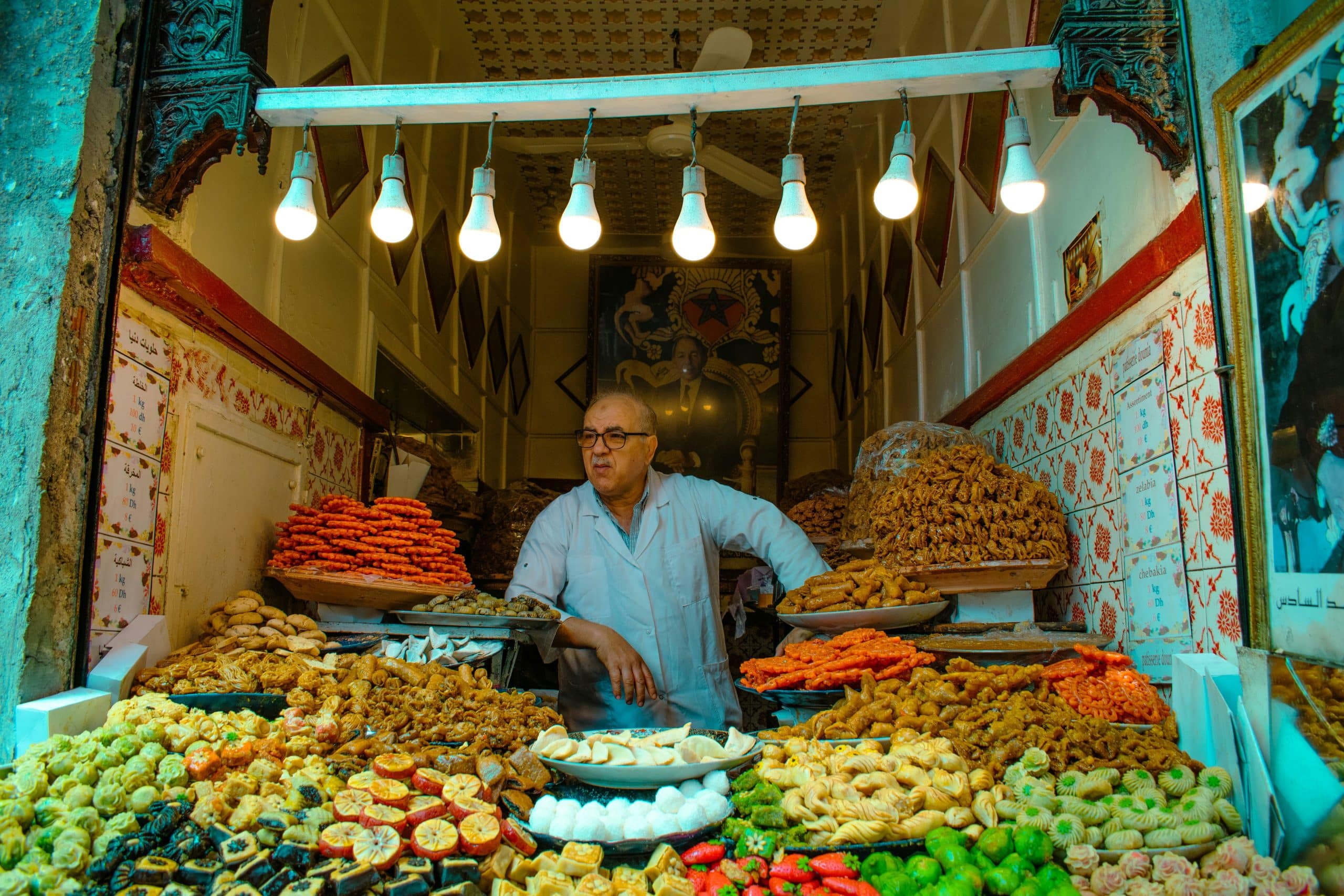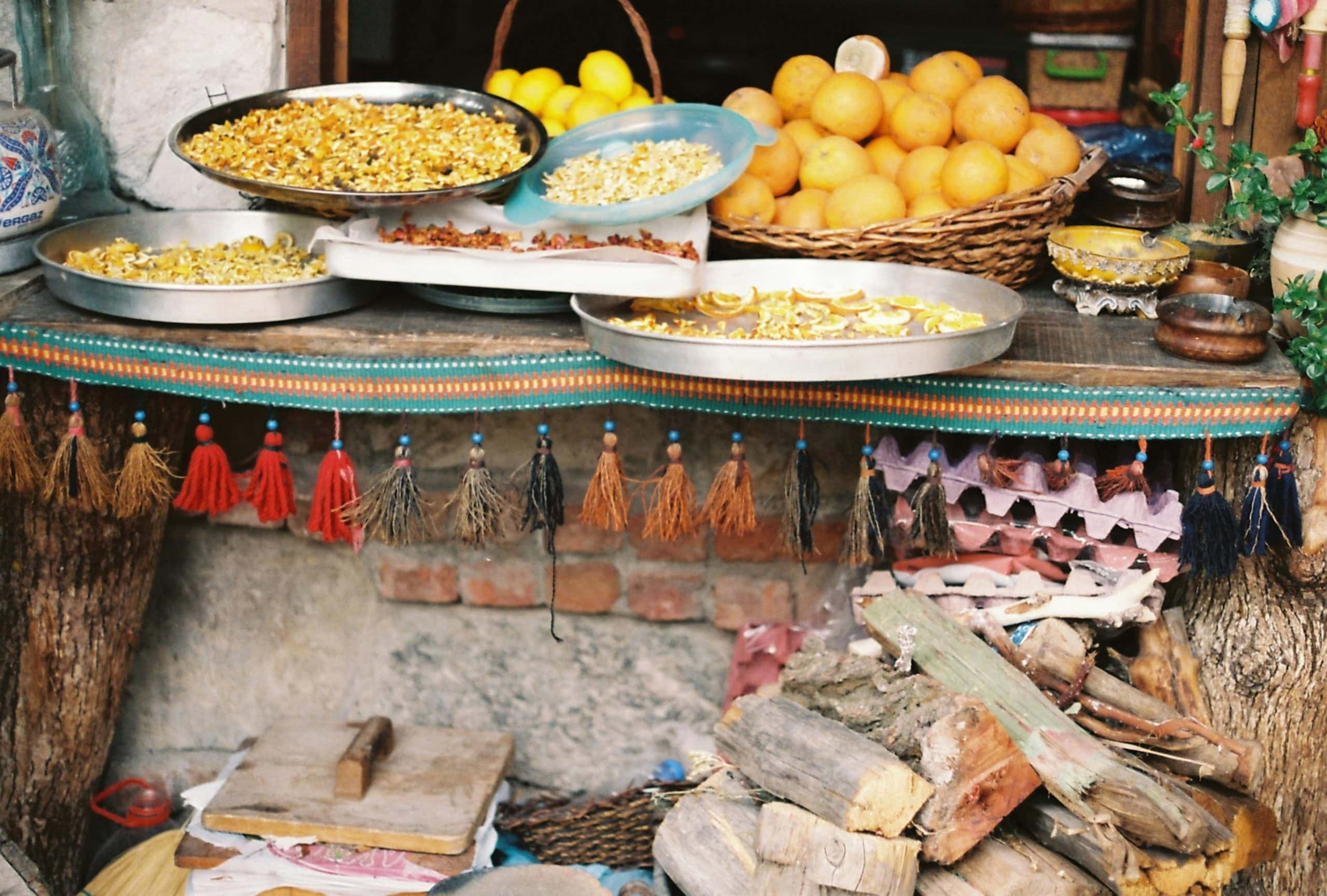Hidden Gems of Egyptian Food Culture (That Tourists Don’t Know)
Most visitors to Egypt leave having eaten the same handful of dishes—koshari, falafel, maybe some grilled kebabs from a hotel restaurant. Honestly, it breaks my heart a little. After spending considerable time living with Egyptian families and exploring neighborhoods where tourism barely exists, I’ve discovered that the country’s real culinary treasures remain completely hidden from the typical travel experience.
What really strikes me is how Egyptian food culture operates on multiple layers. There’s the surface level that tourists encounter, then there’s this incredibly rich, complex system of regional specialties, family traditions, and social customs that most outsiders never glimpse. I remember my first proper Egyptian breakfast—not the continental spread at my hotel, but the one shared with a family in a small village outside Luxor. The flavors were nothing like what I’d experienced in tourist restaurants.
The truth is, authentic Egyptian food culture thrives in spaces that most visitors never enter. Back-alley vendors serving dishes with names I still can’t pronounce properly. Family kitchens where recipes pass down through generations without ever being written down. Regional specialties that change completely depending on whether you’re in the Delta, Upper Egypt, or the coastal cities.
Street Food Secrets Beyond Tourist Areas
Here’s what gets me excited about Egyptian street food—it’s not just about the food itself, but the entire social ecosystem surrounding it. The vendors I’ve gotten to know over the years aren’t just serving meals; they’re maintaining cultural traditions that stretch back centuries.
Take *baladi* bread, for instance. Most tourists encounter this as a side dish, but in neighborhood bakeries, it’s the foundation of an entire meal culture1. I’ve watched families send their children to collect bread still warm from communal ovens, then use it to create impromptu meals that transform simple ingredients into something extraordinary.
Pro Tip: Finding Authentic Street Food
Look for vendors where local workers eat lunch, not where tour groups stop. The best *ful medames* I’ve ever had came from a cart outside a textile factory in Mahalla al-Kubra. The vendor had been serving the same workers for twenty-three years.
The regional variations absolutely fascinate me. In Alexandria, street vendors serve *liver sandwiches* that are completely different from Cairo’s version—more heavily spiced, with a distinctive coastal influence that reflects the city’s Mediterranean connections2. Meanwhile, in Upper Egypt, you’ll find *molokheya* preparations that would surprise most Cairo residents.
What really opened my eyes was learning about seasonal street food cycles. Certain dishes only appear during specific months, tied to agricultural seasons and religious observances. *Raqaq* bread becomes ubiquitous during Ramadan, while *balah el sham* (a sweet pastry) peaks during wedding season. These patterns create a food calendar that tourists completely miss.
Family Cooking Traditions and Home Recipes
The most profound food experiences I’ve had in Egypt happened in family kitchens, not restaurants. There’s something magical about watching a grandmother prepare *mahshi* (stuffed vegetables) using techniques her great-grandmother taught her. These aren’t recipes you can find in cookbooks—they’re living traditions that adapt with each generation.
I remember being invited to help prepare *feseekh* (fermented fish) with a family in Damietta. The process took three days, involved specific timing around moon phases, and required knowledge passed down through five generations3. The grandmother kept correcting my technique, explaining that the salt must be applied “with feeling, not measurement.” That’s when I understood that Egyptian cooking is as much about intuition as it is about ingredients.
Egyptian Food Heritage
Archaeological evidence suggests that ancient Egyptians were among the first civilizations to develop complex fermentation techniques, creating preserved foods that could last through seasonal changes. Modern Egyptian families still use similar preservation methods, particularly for cheese-making and fish preparation.
Family food traditions in Egypt operate on multiple levels. There’s the everyday cooking—simple, practical dishes that fuel daily life. Then there’s celebration food, which becomes incredibly elaborate and regionally specific. And finally, there’s what I call “grandmother food”—dishes that only exist within family circles, recipes that have never been commercialized.
| Occasion | Traditional Dish | Regional Variation | Family Secret |
|---|---|---|---|
| Birth celebration | Meghli (spiced rice pudding) | Delta families add rose water | Specific spice ratios never written down |
| Wedding preparation | Fatayer (filled pastries) | Coastal areas include fish filling | Dough folding technique varies by family |
| Ramadan iftar | Qatayef (filled pancakes) | Upper Egypt uses date filling | Batter consistency adjusted for humidity |
| Harvest season | Roz bi laban (rice pudding) | Rural areas use buffalo milk | Cooking time depends on milk source |
The way Egyptian families approach cooking challenges everything I thought I knew about recipe consistency. I’ve watched the same woman prepare the same dish three different ways depending on what ingredients were available at the market that day. This isn’t improvisation—it’s sophisticated culinary knowledge that allows for constant adaptation while maintaining flavor integrity.
Seasonal Specialties and Regional Variations
One thing that constantly amazes me about Egyptian food culture is how deeply connected it remains to agricultural cycles. Most tourists visit during peak season and experience a narrow slice of what’s actually available throughout the year. The food landscape changes dramatically with the seasons, creating entirely different culinary experiences.
Spring brings *malana* (young green wheat) preparations that are absolutely stunning—fresh, grassy, with a texture unlike anything else. Summer means *teen shoki* (prickly pear) becomes ubiquitous, not just as fruit but incorporated into beverages and desserts4. Fall introduces *bateekh* (watermelon) seed preparations that most foreigners never encounter.
Regional variations add another layer of complexity. Food in Alexandria tastes fundamentally different from food in Aswan, not just because of different ingredients but because of different cultural influences. The coastal cities show clear Mediterranean influences, while Upper Egypt maintains stronger connections to traditional African foodways. The Western Desert regions have their own distinct culinary traditions that barely overlap with Nile Valley cuisine.
- Delta region: Heavy emphasis on fish and rice dishes, with distinctive spice blends including dried lime
- Upper Egypt: More meat-based dishes, with unique grain preparations and fermented dairy products
- Coastal areas: Mediterranean influences, with extensive use of seafood and different bread traditions
- Desert regions: Preserved foods, camel meat preparations, and unique milk processing techniques
What really fascinates me is how these regional differences reflect historical trade routes and cultural exchanges. You can taste the influence of Ottoman cuisine in northern cities, while southern regions maintain flavors that seem to connect directly to ancient Egypt. It’s like eating your way through layers of history.

Social Dining Customs and Etiquette
Egyptian dining culture operates according to unwritten rules that most tourists never encounter. I learned this the hard way during my first invitation to a family meal in Cairo. I showed up with flowers, sat where I was told, and thought I was being polite. I had no idea I was missing an entire layer of social interaction happening around the food.
The concept of *karam* (hospitality) in Egyptian culture extends far beyond simply offering food. It’s a complex social system that governs everything from how bread is broken to who serves whom and in what order5. I’ve watched families coordinate elaborate serving sequences that ensure everyone receives exactly the right portion of the best parts of each dish.
Essential Dining Etiquette
Always wait for the eldest person to begin eating. Share from communal dishes using bread, not utensils. Never refuse food directly—instead, say “May God give you health” (Allah yatik el-saha) to politely decline additional portions.
The social dynamics around food preparation are equally complex. In traditional Egyptian households, cooking is rarely a solitary activity. I’ve participated in *molokheya* preparation sessions that involved six women from three generations, each responsible for specific tasks based on their experience and family position. The conversation during these sessions covers everything from family gossip to philosophical discussions about life.
What struck me most was learning about the different categories of meals and their social significance. There’s everyday eating, which is relatively informal. Then there’s *ezoma* (formal invitation) dining, which follows strict protocols. And finally, there’s celebration feeding, which becomes an elaborate display of family status and cooking skills.
- Casual family meals: Simple dishes, flexible timing, minimal ceremony
- Guest meals: Increased formality, specific dish selections, careful presentation
- Celebration feasts: Maximum dishes, elaborate preparation, community involvement
The way Egyptians use food to build and maintain social relationships is sophisticated beyond what most outsiders realize. I’ve seen business deals negotiated over shared plates of *koshary*, marriage proposals made during family *iftar* gatherings, and community disputes resolved through carefully orchestrated meal invitations.
Authentic Food Markets and Local Vendors
The real heart of Egyptian food culture lives in neighborhood markets that most tourists never find. These aren’t the sanitized, tourist-friendly bazaars you’ll read about in guidebooks. They’re working markets where local families do their daily shopping, where vendors have been serving the same customers for decades.
I spend hours wandering through *souk el-baladi* (local markets) whenever I’m in Egypt. The sensory experience is overwhelming—the smell of fresh herbs mixed with spices, the sound of vendors calling out daily specials, the sight of produce arranged in patterns that seem almost artistic. But more than that, these markets represent living food traditions that connect directly to ancient Egyptian commercial practices6.
The vendor relationships in these markets operate on trust and personal knowledge that develops over years. I’ve watched customers discuss their family’s health conditions with spice vendors who then recommend specific herb combinations. Butchers who know exactly how each family prefers their meat prepared. Produce vendors who save the best items for regular customers.
What amazes me is the incredible diversity of ingredients available in these markets that never appear in tourist-oriented restaurants. *Jew’s mallow* (molokheya) in seven different varieties. Ancient grains like *emmer* and *einkorn* that connect directly to pharaonic agriculture. Fermented dairy products with flavors that would challenge most Western palates but represent sophisticated preservation techniques.
The seasonal rhythms of these markets tell the story of Egyptian agriculture. Spring brings an explosion of fresh greens and herbs. Summer means stone fruits and melons. Fall introduces dried goods and preservation activities. Winter focuses on root vegetables and preserved foods that sustain families through the cooler months.
But here’s what really gets me—the way these markets function as community centers, not just commercial spaces. Information gets shared, social connections maintained, cultural knowledge transmitted. The act of shopping for food becomes a way of participating in community life that tourists rarely experience.
How Food Preserves Egyptian Heritage
Food in Egypt carries cultural memory in ways that constantly surprise me. Recipes contain historical information about trade routes, migration patterns, and cultural exchanges. Cooking techniques preserve ancient knowledge about resource management and seasonal adaptation. Family food traditions maintain connections to ancestors and homeland that survive even major social changes.
I’ve met Egyptian families living in urban areas who still prepare traditional dishes exactly as their rural grandparents did, using techniques that require specific knowledge about fermentation, drying, and preservation. These aren’t museum pieces—they’re living traditions that provide practical benefits and cultural continuity7.
The way Egyptian food culture adapts to modern circumstances while maintaining traditional elements is remarkable. I’ve watched families modify ancient recipes to work with modern kitchen equipment, substitute ingredients based on current availability, and teach traditional techniques to younger generations using contemporary communication methods.
This cultural transmission through food happens at multiple levels simultaneously. Individual families maintain their specific traditions. Regional communities preserve their distinctive specialties. And the broader Egyptian culture uses food to maintain connections to historical identity and national character.
What really moves me is witnessing how food traditions provide stability during times of social and economic change. During my time in Egypt, I’ve observed families relying on traditional food preservation techniques during economic difficulties, drawing on ancestral knowledge to maintain nutrition and food security. These aren’t just cultural practices—they’re practical survival strategies that have sustained Egyptian communities for millennia.
Experience Authentic Egyptian Food Culture
Seek out neighborhood markets in residential areas. Accept invitations to family meals when offered. Visit during different seasons to experience seasonal specialties. Learn basic Arabic food terms to connect with vendors. Most importantly, approach Egyptian food culture with genuine curiosity and respect for its complexity.
The future of Egyptian food culture depends on maintaining these traditional knowledge systems while adapting to contemporary realities. I’ve seen encouraging examples of young Egyptians documenting family recipes, urban families maintaining connections to rural food traditions, and immigrant communities preserving Egyptian food culture in new countries.
But challenges exist. Urbanization threatens traditional food knowledge. Economic pressures favor standardized, commercially produced foods over traditional preparations. Climate change affects agricultural patterns that have remained stable for centuries. The tourism industry, while economically important, sometimes promotes simplified versions of Egyptian cuisine that don’t reflect its true complexity.
My journey through Egyptian food culture continues to teach me about the profound connections between food, identity, and community. Every meal shared, every recipe learned, every market visited adds another layer to my understanding of how food preserves and transmits cultural knowledge across generations.
The hidden gems of Egyptian food culture aren’t just about discovering new dishes—they’re about understanding how food functions as a living language that connects past and present, individual and community, tradition and innovation. This culture rewards curiosity, patience, and genuine respect for the knowledge and traditions of Egyptian families and communities.
For those willing to venture beyond tourist restaurants and hotel buffets, Egyptian food culture offers incredible rewards. Not just in terms of flavors and experiences, but in terms of cultural understanding and human connection. The real treasures lie in shared meals, family kitchens, neighborhood markets, and the generous hospitality of Egyptian people who take pride in sharing their culinary heritage with those who approach it with genuine interest and respect.
References



